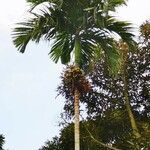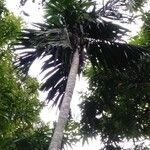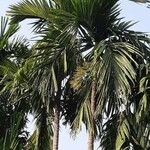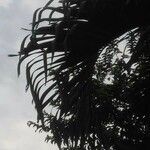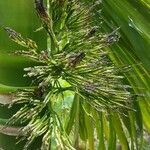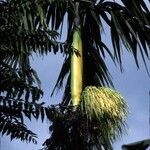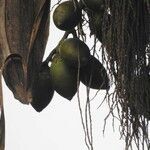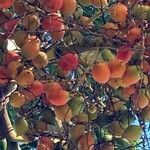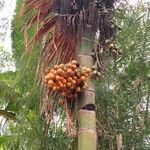| Therapeutic use
|
Edema (bark), Flatulence (bark), Anorexia (fruit), Anthelmintics (fruit), Anti-bacterial agents (fruit), Antifungal agents (fruit), Anti-infective agents (fruit), Antineoplastic agents (fruit), Aphrodisiacs (fruit), Asthenia (fruit), Astringents (fruit), Cardiovascular system (fruit), Contraceptive agents (fruit), Dentifrices (fruit), Diarrhea (fruit), Digestive system diseases (fruit), Diuretics (fruit), Halitosis (fruit), Helminthiasis (fruit), Hemagglutination (fruit), Hypoglycemic agents (fruit), Laxatives (fruit), Menstruation-inducing agents (fruit), Neoplasms (fruit), Nervous system diseases (fruit), Oral ulcer (fruit), Periodontal diseases (fruit), General tonic for rejuvenation (fruit), Skin diseases (fruit), Snake bites (fruit), Spasm (fruit), Ulcer (fruit), Urination disorders (fruit), Urologic diseases (fruit), Vasodilator agents (fruit), Wound healing (fruit), Bronchial diseases (leaf), Cough (leaf), Hypoglycemic agents (leaf), Low back pain (leaf), Parasympatholytics (leaf), Spasm (leaf), Liver diseases (root), Stomatitis (root), Anorexia (seed), Anti-bacterial agents (seed), Anti-HIV agents (seed), Antineoplastic agents (seed), Asthenia (seed), Astringents (seed), Cardiotonic agents (seed), Dental caries (seed), Diarrhea (seed), Diuretics (seed), Eye infections (seed), Gingivitis (seed), Leukorrhea (seed), Mouth diseases (seed), Periodontal diseases (seed), Tooth diseases (seed), Urination disorders (seed), Vaginal diseases (seed), Abortifacient agents (shoot), Ache(Stomach) (unspecified), Ascariasis (unspecified), Astringent (unspecified), Beri-Beri (unspecified), Cholera (unspecified), Circulation (unspecified), Colic (unspecified), Colitis (unspecified), Cornea (unspecified), Dentifrice (unspecified), Detergent (unspecified), Diarrhea (unspecified), Diuretic (unspecified), Dropsy (unspecified), Dysentery (unspecified), Dyspepsia (unspecified), Edema (unspecified), Energy (unspecified), Fever (unspecified), Gastrosis (unspecified), Gonorrhea (unspecified), Hematuria (unspecified), Herpes (unspecified), Hysteria (unspecified), Intoxicant (unspecified), Malaria (unspecified), Masticatory (unspecified), Miotic (unspecified), Odontosis (unspecified), Oliguria (unspecified), Ophthalmia (unspecified), Preventitive(Malaria) (unspecified), Rhagades (unspecified), Rhinosis (unspecified), Scabies (unspecified), Stomachic (unspecified), Taenicide (unspecified), Taenifuge (unspecified), Tapeworm (unspecified), Tenifuge (unspecified), Tonic (unspecified), Venereal (unspecified), Vermifuge (unspecified), Sore (unspecified), Tumor(Abdomen) (unspecified), Carminative (unspecified), Cancer(Esophagus) (unspecified), Diaphoretic (unspecified), Laxative (unspecified), Preventitive(Mephitis) (unspecified), Smallpox (unspecified), Syphilis (unspecified), Anthelmintics (unspecified), Asthma (unspecified), Central nervous system depressants (unspecified), Cholinergic antagonists (unspecified), Dentifrices (unspecified), Fractures, bone (unspecified), Hypnotics and sedatives (unspecified), Low back pain (unspecified), Mydriatics (unspecified), Sexually transmitted diseases (unspecified), Skin diseases (unspecified), Skin diseases, infectious (unspecified), Ulcer (unspecified), Urination disorders (unspecified)
|
